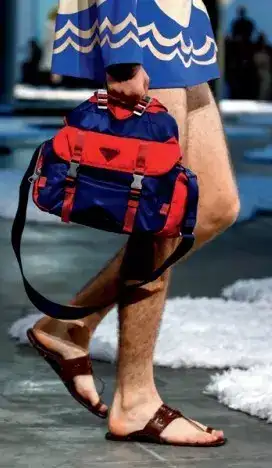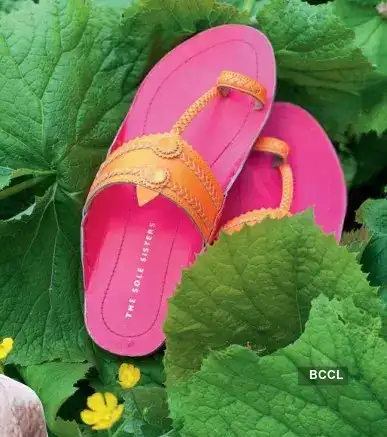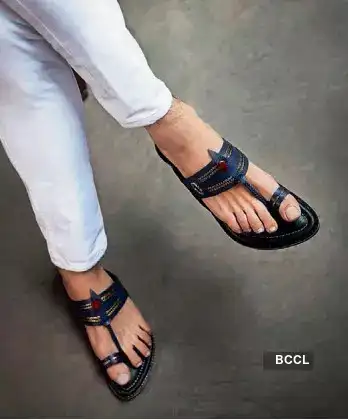Kolhapuri goes to Milan: From Rs 150 streets to Rs 1 lakh runway sandals - The Economic Times
Jaitly says Prada needs to honourably give a nod to the centuries of production of this specific design in Kolhapur, which enjoys a geographical indication (GI) tag. On Saturday, in a statement to ET, Prada did that, acknowledging that the sandals were “inspired by traditional Indian footwear made in specific districts in Maharashtra and Karnataka”. It also said they “are in contact with the Maharashtra Chamber of Commerce, Industry & Agriculture on this topic”.
India is enjoying a moment in global fashion. After Prada, the Pharrell Williams x Louis Vuitton show, “Paris to India”, at Milan had music by AR Rahman and a carpet with a snake-and-ladder motif designed by Bijoy Jain. Last month, the dupatta was sold as Scandinavian scarf by Reformation, and the Japanese lifestyle brand Puebco advertised Indian market bags for Rs 4,000.
Writer Shobhaa De, a lifelong wearer of the iconic Kolhapuri chappals, says these have been her go-to footwear, right from college, though she admits it’s getting harder to find a good pair. She doesn’t see the Prada Kolhapuri as a “threat”. “What’s disheartening is that Prada did not bother to identify this unique footwear. It is NOT a sandal—it is a chappal! But maybe the buzz around the Prada Kolhapuri will inspire young fashionistas to rediscover our Kolhapuri and indirectly support its revival.”

 Getty Images
Getty ImagesDe could be right. Since the Prada show on June 22, Google Trends has shown a spike in searches for Kolhapuris. Harshwardhan Patwardhan, founder of Pune-based, Kolhapuri-first footwear brand Chappers, has seen an uptick in the buzz around his brand, with a 400500% jump in social media engagement. Its physical stores in Pune and Nashik, apart from 100 stockists across India, have had more walk-ins than before. Chondamma Cariappa, founder of The Sole Sisters, known for its colourful Kolhapuris, too says there has been a significant increase in sales and inquiries along with a noticeable rise in social media activity.
After the Prada show, netizens were up in arms, demanding credit.
However, Shwetasree Majumder, managing partner, Fidus Law Chambers, who specialises in GI matters, says the Prada controversy is misplaced. She says a GI tag does not mean the holder has legal recourse against Prada for inspiration. “A GI registration is given under a domestic law. A chappal has to be made in certain districts of Maharashtra and Karnataka and with specific materials, tools, techniques and dyes to be a Kolhapuri chappal. Prada primarily makes its leather sandals in Italy. The GI law has no applicability to perceived ‘lookalikes’,” she says.
She says had Prada sold its chappals as Kolhapuris, it would have been an infringement of GI. “The GI law prohibits a craft that is not from that specific geography from being called by that particular name.”

The sentiment is echoed by Cariappa and Aprajita Toor, who operate in the premium luxury segment, with Kolhapuris starting at Rs 3,500. Aprajita Toor, founder of an eponymous label she started in 2011, says she not only admires the Kolhapuri but lives in it. “The true beauty of the Kolhapuri lies in its versatility, it moves fluidly across eras, aesthetics and wardrobes, yet never loses its essence.” It is a sentiment echoed by wearers as the chappal works as daywear, nightwear and even occasionwear.
Fashion commentator Prasad Bidapa says, “The craft of Kolhapuris stands at a crossroads today. A craft must adapt to stay relevant, but this should be done thoughtfully, respecting its heritage and the artisans who have preserved it.” He says only when brands strike a balance between innovation and preservation can Kolhapuris thrive and evolve while maintaining their cultural significance.

Agrees Toor, who says that, for her, it was never about reinvention but respectful reinterpretation. She adds, “What makes it timeless is its rootedness. The Kolhapuri is more than a mere footwear, it’s a living legacy. We have consistently experimented with it and, in many ways, pioneered new silhouettes and design languages, but never at the cost of the story that grounds it.” She has worked with refined textures, intricate embroideries and structural elements like heels.
Cariappa calls the Kolhapuri the quintessential Indian shoe. She says she keeps the base intact and uses it as a canvas to showcase various crafts in a manner that is fresh—like adding colour and accents like palm weave or handwoven cane wicker craft.
Craft and design historian Tanishka Kachru, senior faculty, exhibition design, National Institute of Design, Ahmedabad, says artisans should have full ownership of the design of Kolhapuri chappals as it is their innovation over centuries that has shaped the cultural identity of the footwear. However, she says the fashion industry can provide a huge boost: “This visibility [thanks to Prada] could drive demand and in turn open up space for artisanal innovation and bring economic benefits to the community.”
Toor says the chappals will remain iconic, thanks to its ability to adapt. She says, “That fluidity is what gives it cultural weight.” The Prada Kolhapuri is probably the push the chappal needs to walk the talk.
Read More News on
Stories you might be interested in











